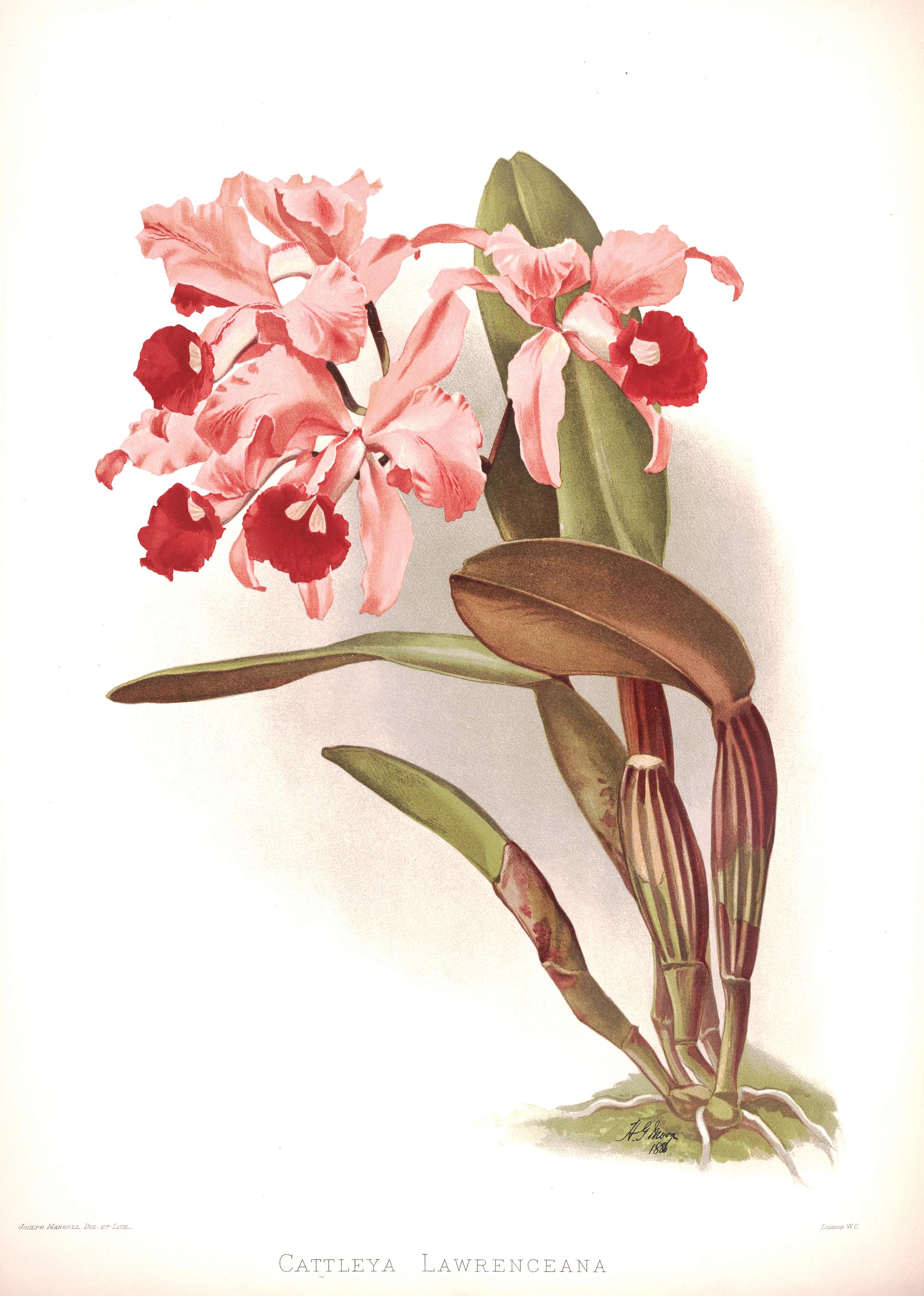The Gardeners’ Chronicle 23: 338 (1885)
This interesting species was discovered in 1884 at the foot of Mount Roraima by a man named Seidel, a collector for the Sanders & Co. house in England. It was described by Heinrich Gustav Reichenbach in 1885 from dissected samples. Reichenbach dedicated this plant to Sir Trevor Lawrence, president of the Royal Horticultural Society of England. The story goes that Sir Robert Schomburgk originally discovered it some 40 years earlier, but made the mistake of mistaking it for Cattleya mossiae and then for Cattleya pumila from Brazil.
Cattleya lawrenceana is native to Guyana and Venezuela. So far there are no reports of its existence in Brazil. It inhabits the slopes of the tepuis, where it grows as lithophyte in full sun, and in shaded forests on the trunks and main branches of the trees, at altitudes that vary between 400 and 1,200 meters above sea level. Its area of distribution is between parallels 4° to 6° north latitude and meridians 61° to 66° west longitude.

Although it is a species that grows in nature under very wide climatic conditions, it is usually quite difficult to manage in cultivation. Parallel to this, this beautiful species has been severely threatened for decades by collectors paid by large commercial houses and by indigenous people who see in them an alternative source of income, to the point that today it is very difficult to observe any plant in its habitat.
It is a compact species, its pseudobulbs can reach about 25 cm, subcylindrical, slightly compressed, with two to four internodes and a single leaf at its apex, very coriaceous, oblong. Both the pseudobulbs and the leaves tend to have a purple coloration. Seeing only the plant, it could be confused with Cattleya lueddemanniana or with Cattleya wallisii from Brazil.
It blooms between February and April, with pseudobulbs that have had a period of rest, but with a green spathe. It produces clusters of up to 12 flowers, about 8 to 13 cm in diameter, elegant and well arranged on the foliage. The petals are almost as thin as the sepals, the lip tube is very long and completely envelops the column. The round disc, small and completely colored, reveals the yellow coloration at the bottom.
The type variety is purple, more or less intense. Alba, semialba, concolor and coerulea varieties are also known. At present, the concolor and coerulea varieties, and the angular forms of the type variety, are relatively common. The alba and semialba varieties are still very scarce and therefore quite valuable.
Some cultivars worth mentioning:
- typo: Enriqueta
- Semialba: Misia María, Sara
- coerulea: Aulisi, Jaramillo
C. lawrenceana was distinctly different from the typical large-flowered labiata-type cattleya. It has one of the broadest ranges of color forms of any of the Cattleya species. The typical C. lawrenceana flower is pale to medium lavender in color with a dark rose-lavender lip. Alba, semialba and albescens form are very rare. More color form like pastels, dark lavenders and even dark, rich, flamea types like the one pictured on Chadwick’s book page 123 also available in this species. Reichenbach flamboyantly compares the rich color of C. lawrenceana’s lip to the “end of the tail of a heathcock, meaning it has a deep, rich, almost glowing royal purple labellum. It does not have wide petals, round shape, or heavy substance, but it needs none of these qualities to be beautiful. The native Venezuelan Indians near Mt. Roraima called C. lawrenceana by a name that means “blossom of the wood”.
Notable varieties:
- C. lawrenceana ‘Diana’ – with its delicate pale-lavender concolor flowers, is one of the most beautiful cattleyas, shown on book page 124
- C. lawrenceana f. alba ‘Mary Regina’ FCC/RHS (1910) – very rare first albino of the species
